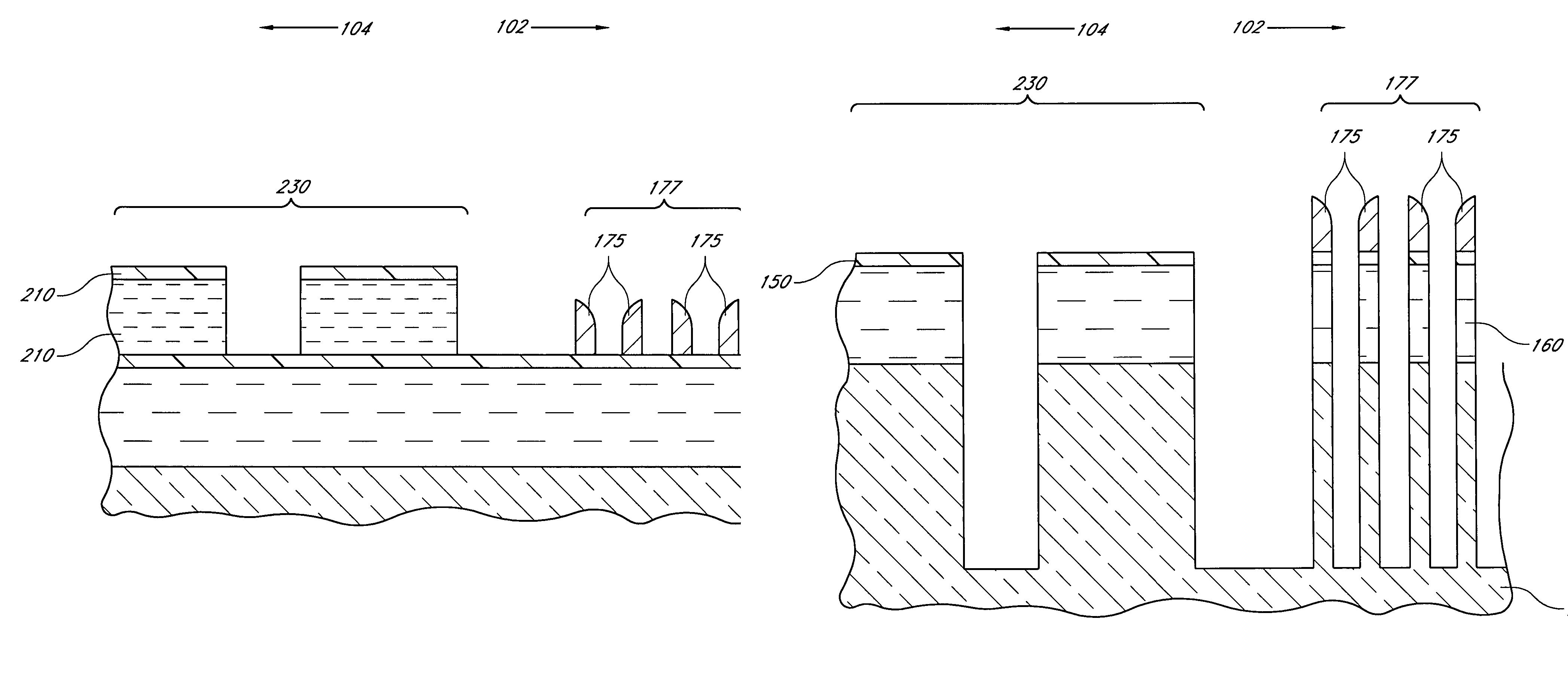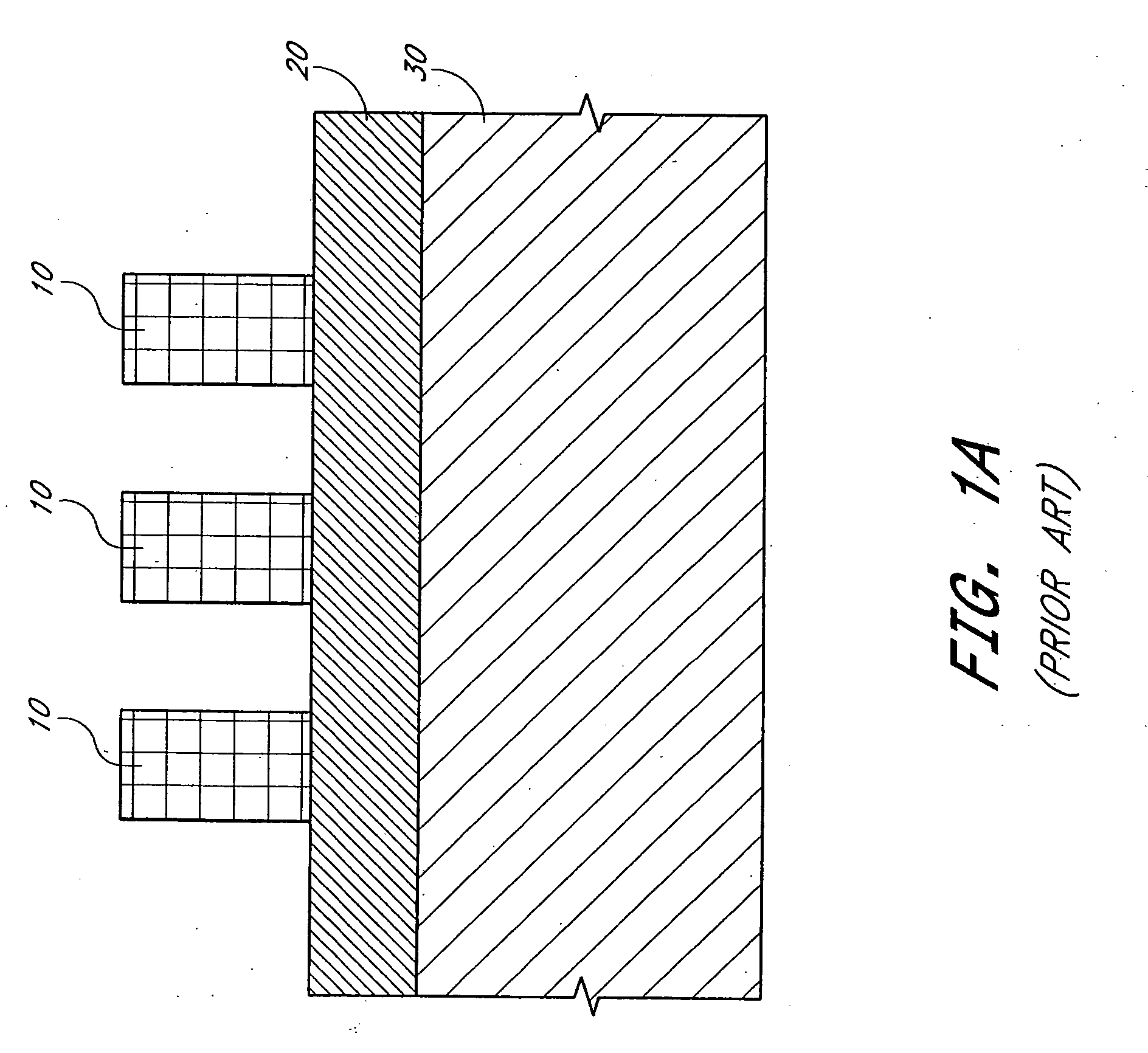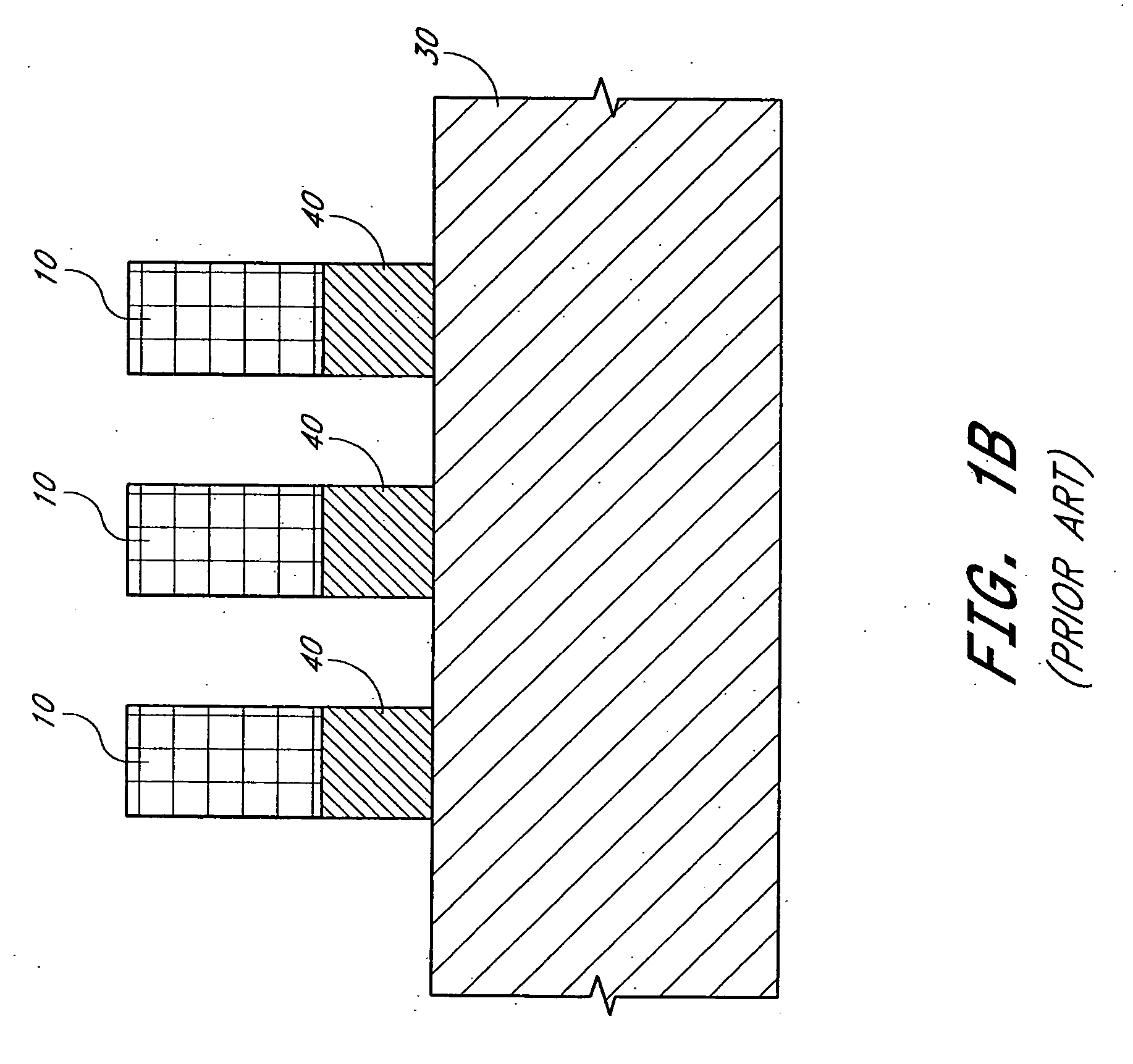Method for integrated circuit fabrication using pitch multiplication
a technology of integrated circuits and multiplication, applied in the field of masking techniques, can solve the problems of inability to reliably use photolithographic techniques, the flexibility required to define circuits will typically not be possible using a single mask, and the inability to achieve the effect of defining circuits
- Summary
- Abstract
- Description
- Claims
- Application Information
AI Technical Summary
Benefits of technology
Problems solved by technology
Method used
Image
Examples
Embodiment Construction
[0042] In addition to problems with forming different size features, it has been found that pitch doubling techniques can have difficulty transferring spacer patterns to a substrate. In particular, in common methods of transferring patterns, both the spacers and the underlying substrate are exposed to an etchant, which preferentially etches away the substrate material. It will be appreciated, however, that the etchants also wear away the spacers, albeit at a slower rate. Thus, over the course of transferring a pattern, the spacers can be worn away by the etchant before the pattern transfer is complete. These difficulties are exacerbated by the trend towards decreasing feature size, which, for example, increasingly leads to higher aspect ratios as the widths of these trenches decrease. In conjunction with difficulties of producing structures of different feature sizes, these pattern transfer limitations make even more difficult the application of pitch-doubling principles to integrat...
PUM
 Login to View More
Login to View More Abstract
Description
Claims
Application Information
 Login to View More
Login to View More - R&D
- Intellectual Property
- Life Sciences
- Materials
- Tech Scout
- Unparalleled Data Quality
- Higher Quality Content
- 60% Fewer Hallucinations
Browse by: Latest US Patents, China's latest patents, Technical Efficacy Thesaurus, Application Domain, Technology Topic, Popular Technical Reports.
© 2025 PatSnap. All rights reserved.Legal|Privacy policy|Modern Slavery Act Transparency Statement|Sitemap|About US| Contact US: help@patsnap.com



